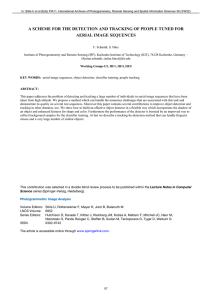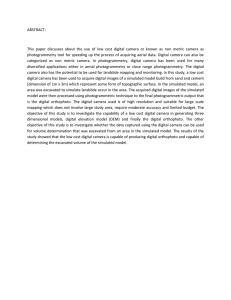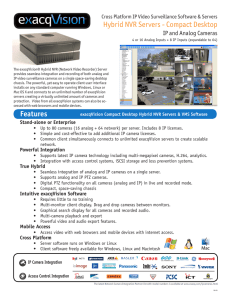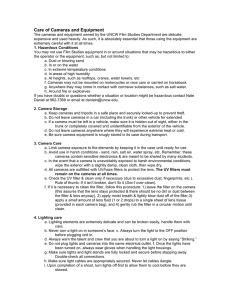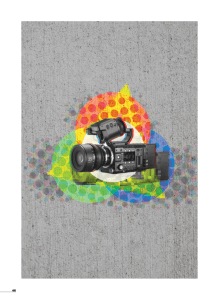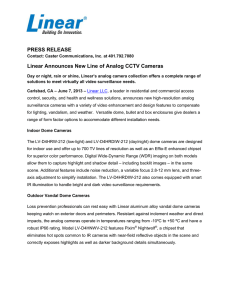RELATIVE ORIENTATION: A COMPARISON BETWEEN ANALOG AND DIGITAL IMAGES
advertisement
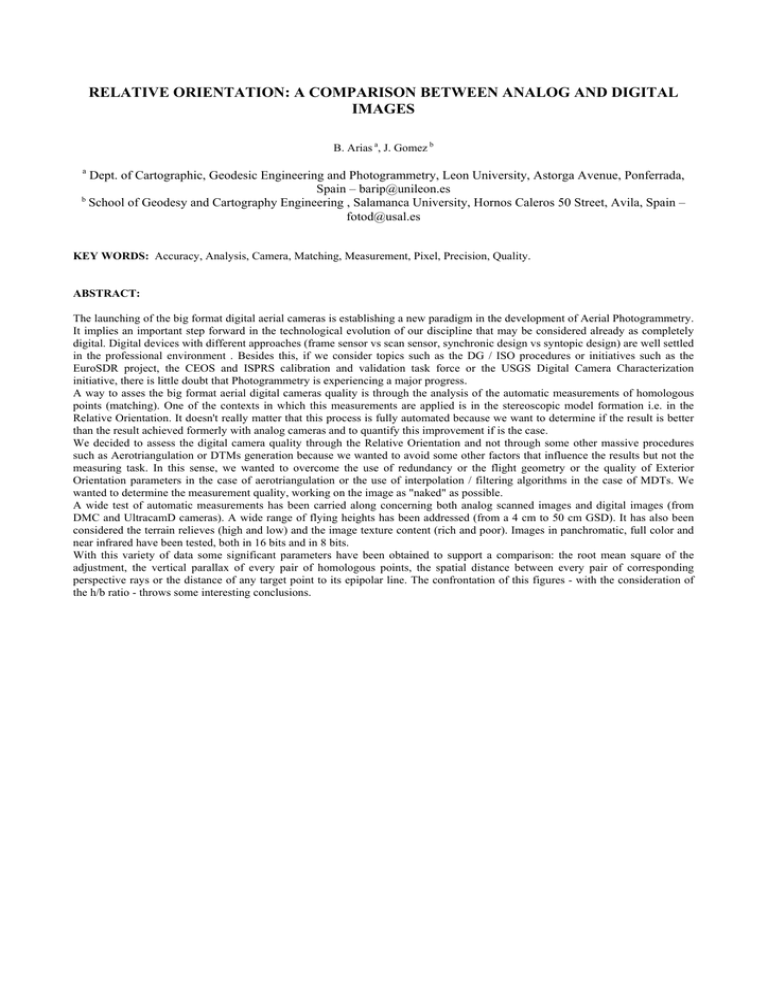
RELATIVE ORIENTATION: A COMPARISON BETWEEN ANALOG AND DIGITAL IMAGES B. Arias a, J. Gomez b a Dept. of Cartographic, Geodesic Engineering and Photogrammetry, Leon University, Astorga Avenue, Ponferrada, Spain – barip@unileon.es b School of Geodesy and Cartography Engineering , Salamanca University, Hornos Caleros 50 Street, Avila, Spain – fotod@usal.es KEY WORDS: Accuracy, Analysis, Camera, Matching, Measurement, Pixel, Precision, Quality. ABSTRACT: The launching of the big format digital aerial cameras is establishing a new paradigm in the development of Aerial Photogrammetry. It implies an important step forward in the technological evolution of our discipline that may be considered already as completely digital. Digital devices with different approaches (frame sensor vs scan sensor, synchronic design vs syntopic design) are well settled in the professional environment . Besides this, if we consider topics such as the DG / ISO procedures or initiatives such as the EuroSDR project, the CEOS and ISPRS calibration and validation task force or the USGS Digital Camera Characterization initiative, there is little doubt that Photogrammetry is experiencing a major progress. A way to asses the big format aerial digital cameras quality is through the analysis of the automatic measurements of homologous points (matching). One of the contexts in which this measurements are applied is in the stereoscopic model formation i.e. in the Relative Orientation. It doesn't really matter that this process is fully automated because we want to determine if the result is better than the result achieved formerly with analog cameras and to quantify this improvement if is the case. We decided to assess the digital camera quality through the Relative Orientation and not through some other massive procedures such as Aerotriangulation or DTMs generation because we wanted to avoid some other factors that influence the results but not the measuring task. In this sense, we wanted to overcome the use of redundancy or the flight geometry or the quality of Exterior Orientation parameters in the case of aerotriangulation or the use of interpolation / filtering algorithms in the case of MDTs. We wanted to determine the measurement quality, working on the image as "naked" as possible. A wide test of automatic measurements has been carried along concerning both analog scanned images and digital images (from DMC and UltracamD cameras). A wide range of flying heights has been addressed (from a 4 cm to 50 cm GSD). It has also been considered the terrain relieves (high and low) and the image texture content (rich and poor). Images in panchromatic, full color and near infrared have been tested, both in 16 bits and in 8 bits. With this variety of data some significant parameters have been obtained to support a comparison: the root mean square of the adjustment, the vertical parallax of every pair of homologous points, the spatial distance between every pair of corresponding perspective rays or the distance of any target point to its epipolar line. The confrontation of this figures - with the consideration of the h/b ratio - throws some interesting conclusions.





